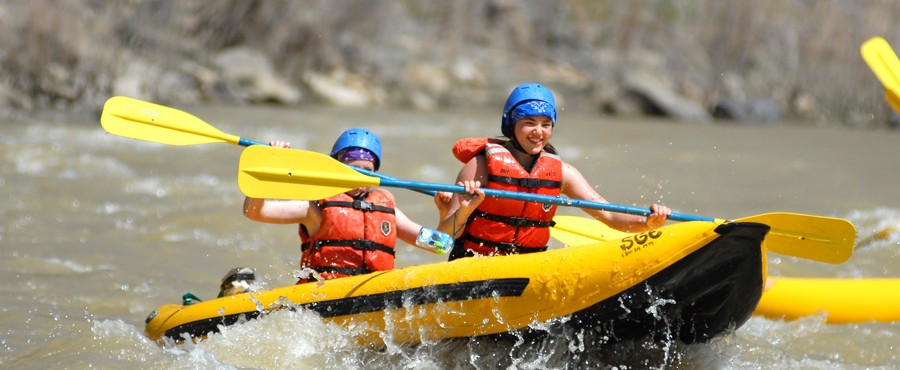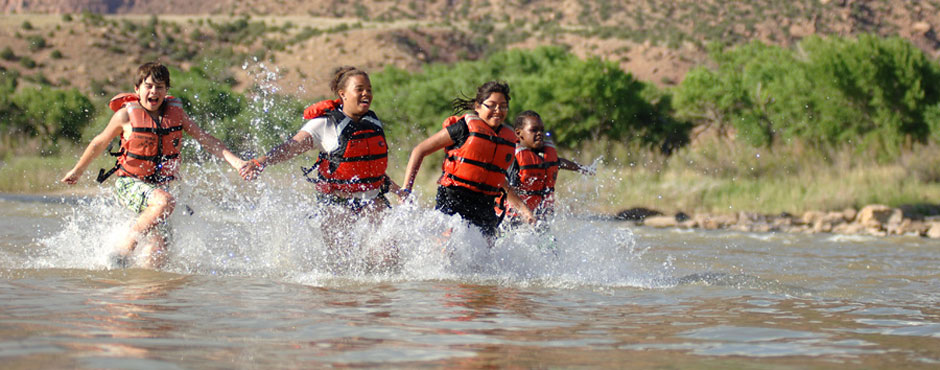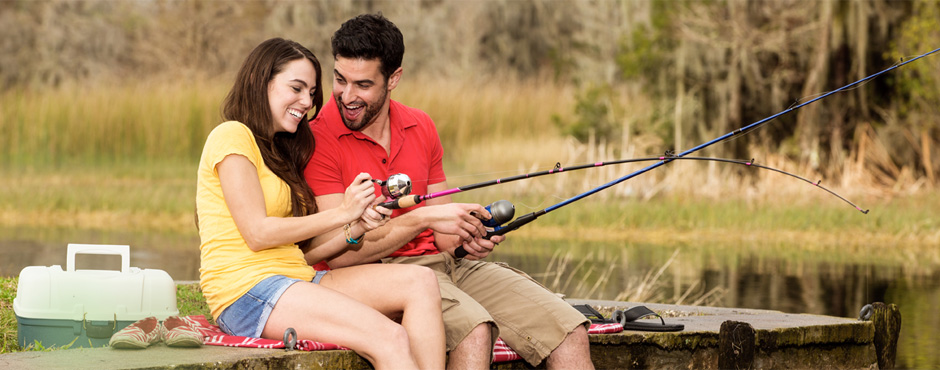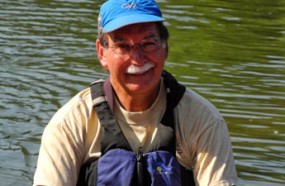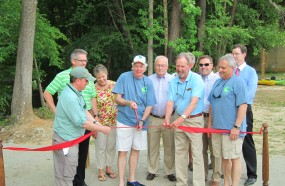What’s a Blue Trail, anyway?
A Blue Trail is a river adopted by communities that are dedicated to improving family friendly recreation such as fishing, boating, hiking, and wildlife-watching, and to protecting rivers and surrounding lands. They are voluntary, locally led efforts that improve community quality of life.
You might be wondering, what’s the difference between a Blue Trail, paddle trail, water trail, and National Water Trail?
They all have one important thing in common. They all help people enjoy their rivers through recreation.
But Blue Trails are slightly different. The term “Blue Trail” describes an effort by communities to improve access and protect their river and surrounding lands.
For example, along the Eagle River Blue Trail in Colorado, communities are improving family-friendly recreation through new access while at the same time protecting riverside land through conservation easements and land acquisition. These efforts not only forever protect important areas for fish and wildlife, but in many cases provide better opportunities for people to enjoy their river.
The Waccamaw River Blue Trail in the Carolinas connects urban and rural communities to protected places like the Waccamaw National Wildlife Refuge and Waccamaw River Heritage Preserve. Communities realize the value of a healthy river and are working to improve zoning and ordinances along the Waccamaw. They are building support for a healthy river by improving recreational access to it.
What’s in the name?
“Blue Trail” is a term that American Rivers uses to describe our work. But we encourage communities to choose a name that is best for them. However, we encourage all communities interested in improving recreational access to look for opportunities to protect their river and riverside lands as part of their efforts to enhance river-based recreation.
Blue Trails can help local communities connect with their river, increase recreation, and help their local economy. Hitchcock Creek's Blue Trail is a great example of how towns from small to large can benefit from reconnecting with their river.
So, in sum…
Blue Trails
Blue Trails are rivers adopted by local communities that are dedicated to improving family-friendly recreation such as fishing, boating, and wildlife watching and to conserving riverside land and water resources. They are voluntary, locally led efforts to improve recreation and tourism, benefit local businesses and the economy, and protect river health and wildlife. American Rivers supports the efforts of communities who want to connect to their rivers through recreation and protect their river. We provide guidance and training to communities as they embark on these efforts.
Paddle trails and water trails
A water trail is a stretch of river, shoreline, or ocean that has been mapped out with the intent to create an educational, scenic, and challenging experience for recreational canoers and kayakers. They are organized by local volunteers with the help of public officials and private landowners, all of whom promote its proper use and maintenance.
National Water Trails
The National Park Service designates National Water Trails to recognize exemplary water trails that are cooperatively supported and sustained. Learn more about the National Water Trail System.
How Blue Trails Help Communities
-
Blue Trails boost local economies
We’re seeing communities working to improve river recreation and protect their rivers through the creation of Blue Trails. And we’re seeing this giving a boost to local economies…
-
Blue Trails Revitalize Communities
Through the Hitchcock Creek Blue Trail, we have renewed a natural resource that will provide paddling, fishing and economic growth through tourism and recreation today and for future generations…
-
Blue Trails Are Good For Business
Outfitters like Surf the Earth rely on Blue Trails to keep them in business.

